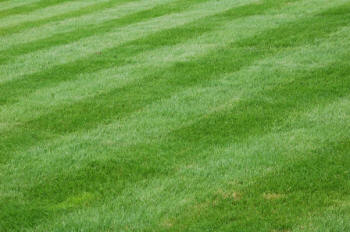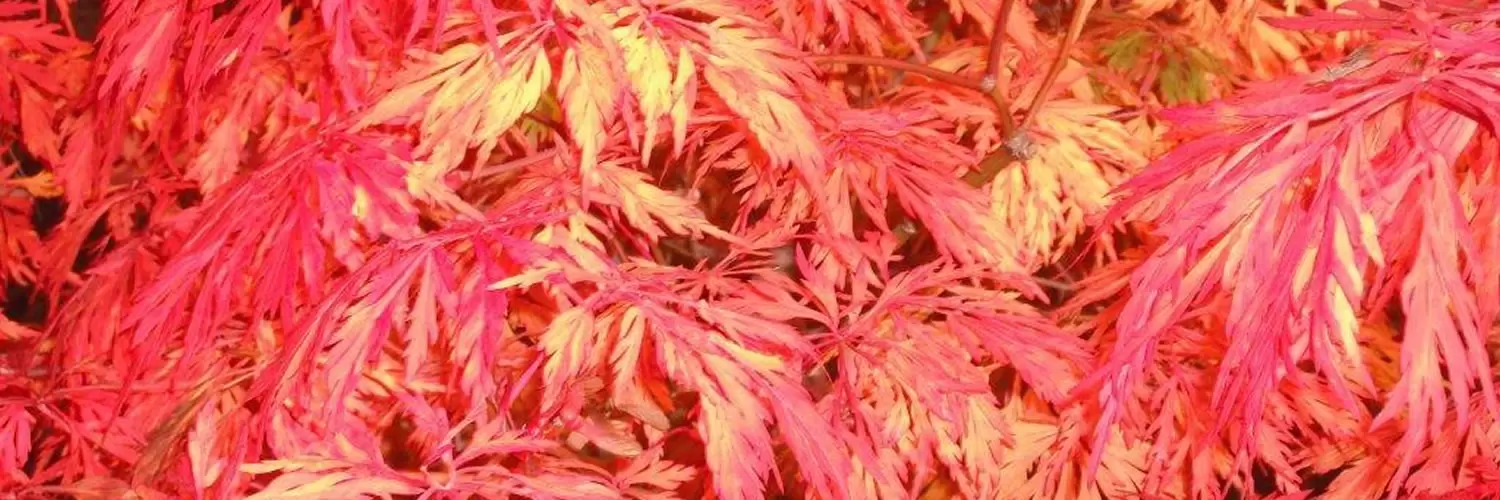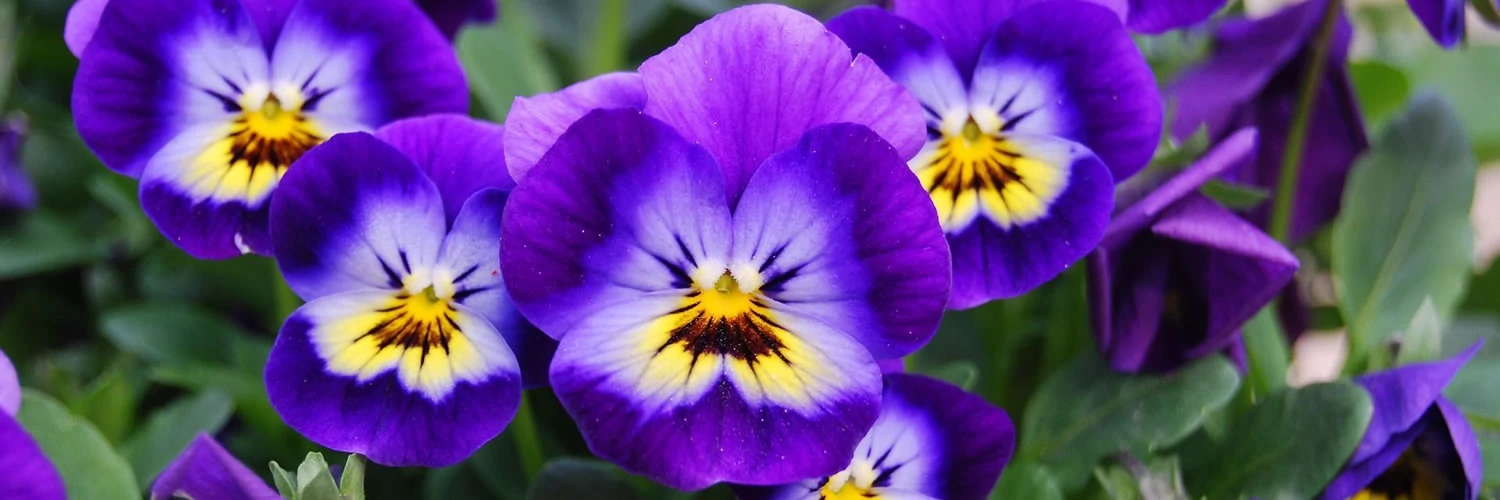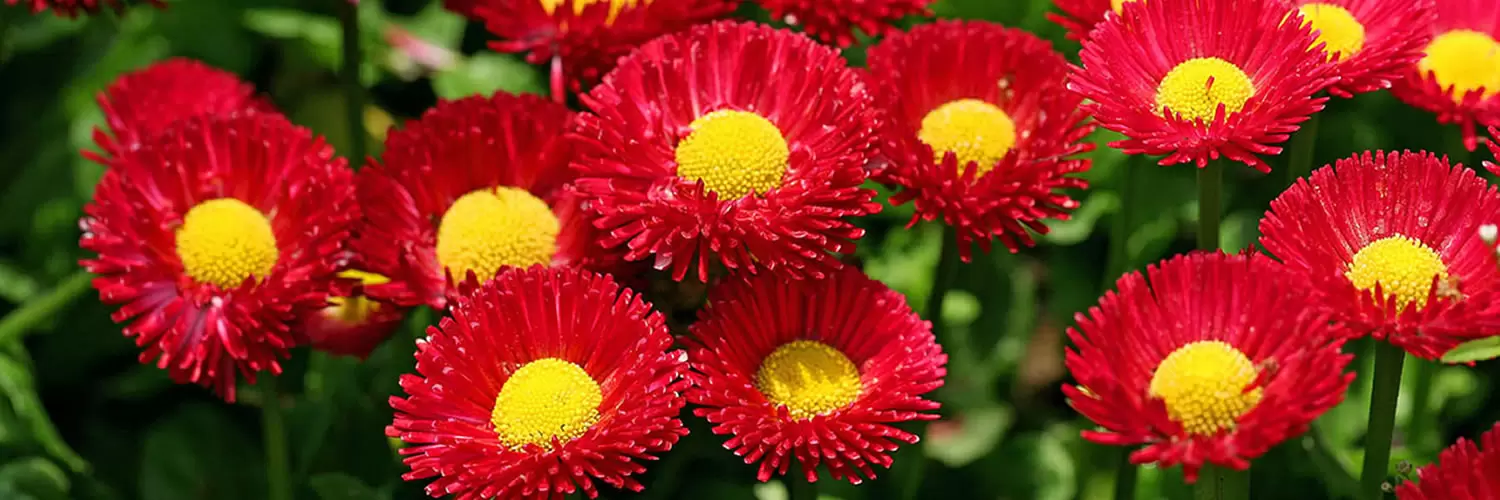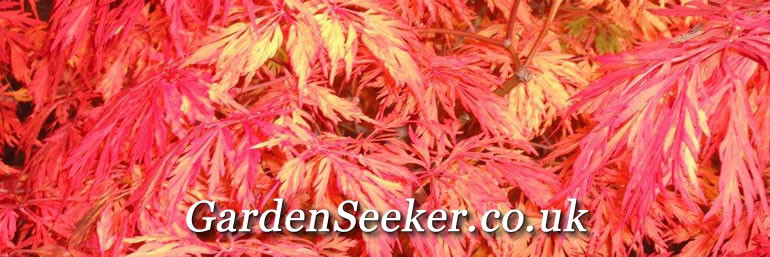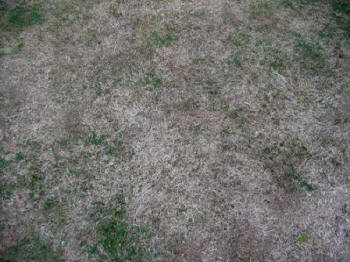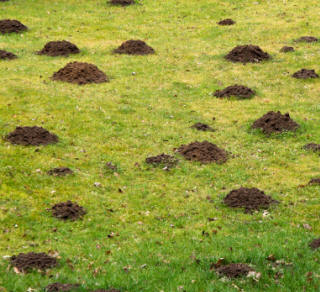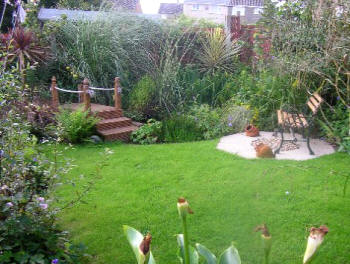Lawn Care. Advice and Information - How to look after your lawn.
Lawns take up a lot of time compared with most aspects of the garden. In spite of the time and care lavished upon lawns, many fail to live up to expectations. Maybe the expectations are too great to start with. Problem being, that next door and surrounding areas seem to have better lawns!
Throwing money at an established lawn or patch of straw is not always the best way forward - neither the most successful in terms of attaining the quality lawn that you want. It is always a good ide to take a step backward, to see what the problem really is with the lawn. More often than not it will be something to do with your lawn care regime.
It is so easy fall into the trap of thinking that more fertiliser feed or weed and kill will give you the desired lawn. Care with a capital C involves much more that feed and weed - yet it need not be complicated or extravagantly time-consuming. In fact, more time is expended upon poor lawns than on good lawns much of the time.
It is all down to the lawn care. Doing the right thing at the right time. No more - no less. It does not mean throwing hard earned cash at the lawn. It simply means caring for your lawn in the right way.
Top Dressing |
Aerating |
Watering | Weeding |
Autumn Lawn Care |
Spring Lawn Care |
Summer Lawn Care
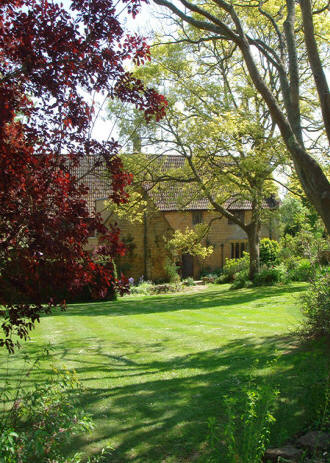
Garden Lawn with trees
In spite of that, there will nearly always be a time in your gardening life, that you have a problem with your lawn. Experienced groundsmen and green keepers have problems - more than their fair share it seems - with their well cared for lawn. But you have an advantage over those professionals. Your lawn will not suffer the foot traffic and constant use that is the bane of the sports lawns.
Care of your Grass Plants!
The lawn probably needs more care and attention than any other part of the garden. For a start, you have to cut it every week or so! Of which, more later. To have a lawn that is the envy of your friends – or enemies – you have to follow a vicious cycle of operations to attain this.
If you think carefully, you will realise that most lawns are subjected to treatment that verges on ‘cruelty’.
You cut off the very part of the plant – and grass is a plant – that is dependent upon providing most of the food requirement for the plant – the leaves! The leaves of a plant are essential for the healthy growth of a plant. For instance, to get rid of certain stubborn weeds in the garden, you simply have to keep cutting off the foliage to weaken the weed so much that it will eventually die.
We cut off the leaves every time we mow, and deprive the plant of it’s main source of energy – photosynthesis – which is vital to the health and growth of the grass plants that make up your lawn. So this is Lawn Care!
Then of course, because we deprive the law of it’s energy (food) source, we have to replace that source of energy by fertilizing the grass, in order to replace all that lost energy that is taken away in the lawnmower box! As if that is not enough, we walk all over the lawn, play games on it, or worse still, let the kids or dogs run riot all over it. It is little wonder that the lawn needs a lot of care and attention!
Feeling guilty yet?
Taking the step backwards - as I suggested above - is not always practicable for your lawn might have been constructed incorrectly several years ago. Or you may have inherited a problem lawn with your newly acquired house. Don't despair! many problems can be overcome with a change of care regime, or a once-off operation to rectify a certain lawn problem.
Most common lawn problems are dealt with in this section of the website, so we will deal with the basics of lawn care here.
The New Lawn
New lawns are like babies. They need more care and attention during the first few months and years of life. Many lawn fail because of lack of care in the first few days, weeks or months. New lawns take time to become established. Turfed lawns - whilst they look instant - are not much different to seeded lawns in that respect.
Watering, careful cutting, sparse feeding, and leave off with the lawn weedkiller for the first year or so.
Give the lawn time to become established before inhabiting it with garden furniture, play pools and play equipment.
Cutting the Lawn
Many lawns are ruined by incorrect mowing. This can either be wrong choice of mower, wrong cutting height, or wrong frequency of cut for the grass that makes up your lawn. Mowing the lawn takes up most of the time expended in lawn care. Get it right, and you will avoid many of the problems associated with poorly cared for lawns.
Many lawns are cut too often, too short. Your lawn is made up of grasses. Grasses are PLANTS! They need to be cared for. Regular scalping is the short path to degrading your lawn.
Watering Lawns
After mowing, watering the lawn is by far the most common subject we get asked about in terms of lawn care. All lawns are different. You need to get to know your lawn and maybe even experiment with less water for a period to see just how much or little your lawn actually needs. The main deciding factor is you! Are you prepared to see a little harmless browning in hot summers, or are you determined to have the lush green at whatever cost?
Most lawns are watered needlessly. Some, in some areas, will need an automatic irrigation system!
Feeding and weeding your Lawn
All lawns will need feeding from time to time - if only to replace the 'energy' of the plants you removed when you mowed your lawn. You will not go far wrong if you use a properly branded and reputable name for this requirement. Just feeding the lawn is still possible with a basic lawn fertiliser feed, but most sold these days also incorporate a weed killer specially formulated for lawn weeds. There is little point in using a combined weed and feed if your lawn is weed-free. Why waste money? Why use chemicals which are unnecessary?
Well cared for lawns, may have the odd weed or small patch of weeds that can be dealt with independently - with a ready to use LAWN weed gun.
Quick Lawn Care Tips
If you want the 'ultimate' lawn, then just follow these lawn care tips. More details are to be found on other area of the site.
Mowing Tip. Do NOT NOT NOT cut your grass too short. If you cut it so short that the brown bases are showing through, instead of foliage, then you are cutting it too short. Little and often is the best advice. Leave some grass foliage on the plants to allow them to regenerate.
Feeding Tip. Because you are regularly cutting off the food supply of the grass plants - the leaves - then you have to help it by supplementary feeding. Spring and early summer are important - much more than autumn/fall feeding.
Watering Tip. Only water your lawn when the lawn really needs it - not as a routine. It does little harm for the plant to suffer a little bit of drought. It will soon recover from a little bit of browning. However, don't let it dry out too much and for long periods. Grasses are surface rooting plants, and if the soil in the top few inches dries right out, then some grasses can die - leaving the way clear for drought tolerant weeds to grow.
Weed Control Tip. Do it before it is too late! If you use a combined weed and feed in the spring and early summer, that should take care of most weeds. Use a small spray gun to control other local outbreaks - as soon as you see them. If you 'scalp' the lawn when mowing, and weaken the grasses, then weeds will soon invade.
General Cultivation Tip for Lawns. Bear in mind that our 'normal' use of a lawn, leads to surface compaction. Even consistent heavy watering can cause compaction. The areas at the edge of tree foliage canopies are specially prone to compaction, as the rain fall off hits the ground quite heavily.
Aeration, combined with
top-dressing is the answer, and is vital
for the first class lawn.
Follow these lawn care tips and you are well on the way to having as
near a perfect lawn as is possible!
